Capri is the most beautiful island in the world. A tiny rock floating in the Tyrrhenian Sea in Italy, exactly 5 kilometers off the tip of the Sorrentine Peninsula and about 36 kilometers south of Naples. It sits right at the crossroads of history, mythology, and some truly absurd real estate prices. Geographically, Capri is part of the Campania region, but spiritually? It exists in its own little universe, somewhere between a Mediterranean paradise and a high-end shopping mall disguised as an island. It covers just 10.4 square kilometers, with its highest point, Monte Solaro, towering at 589 meters above sea level.
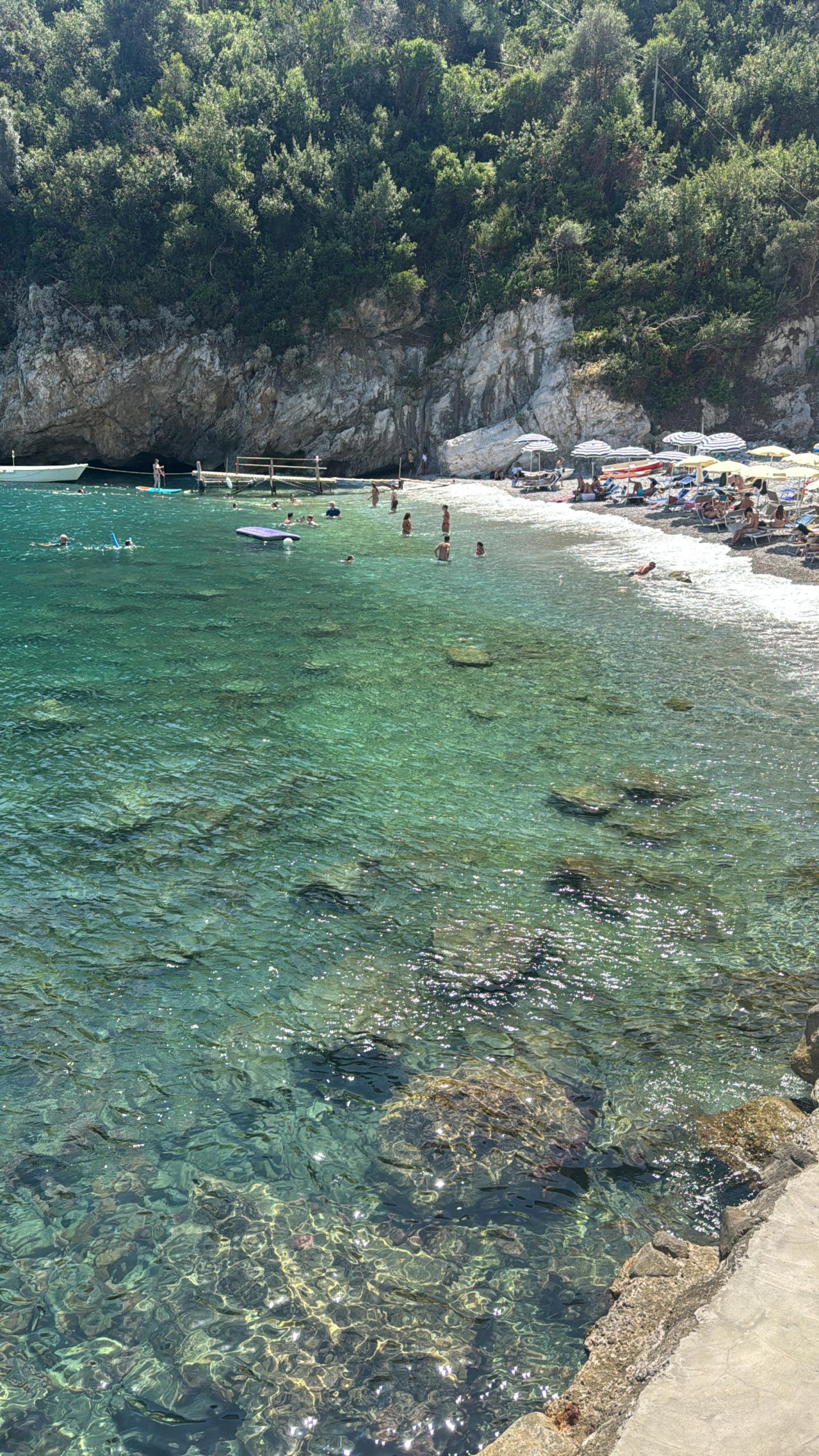
There are two main settlements: Capri town, the island’s beating heart and main tourist attraction, and Anacapri, which sits higher up, quieter, and, frankly, more pleasant. The whole island has a permanent population of around 14,000, but in peak season that number explodes with day-trippers from Naples, Sorrento, and the Amalfi Coast, all squeezing onto ferries like sardines in linen shirts.
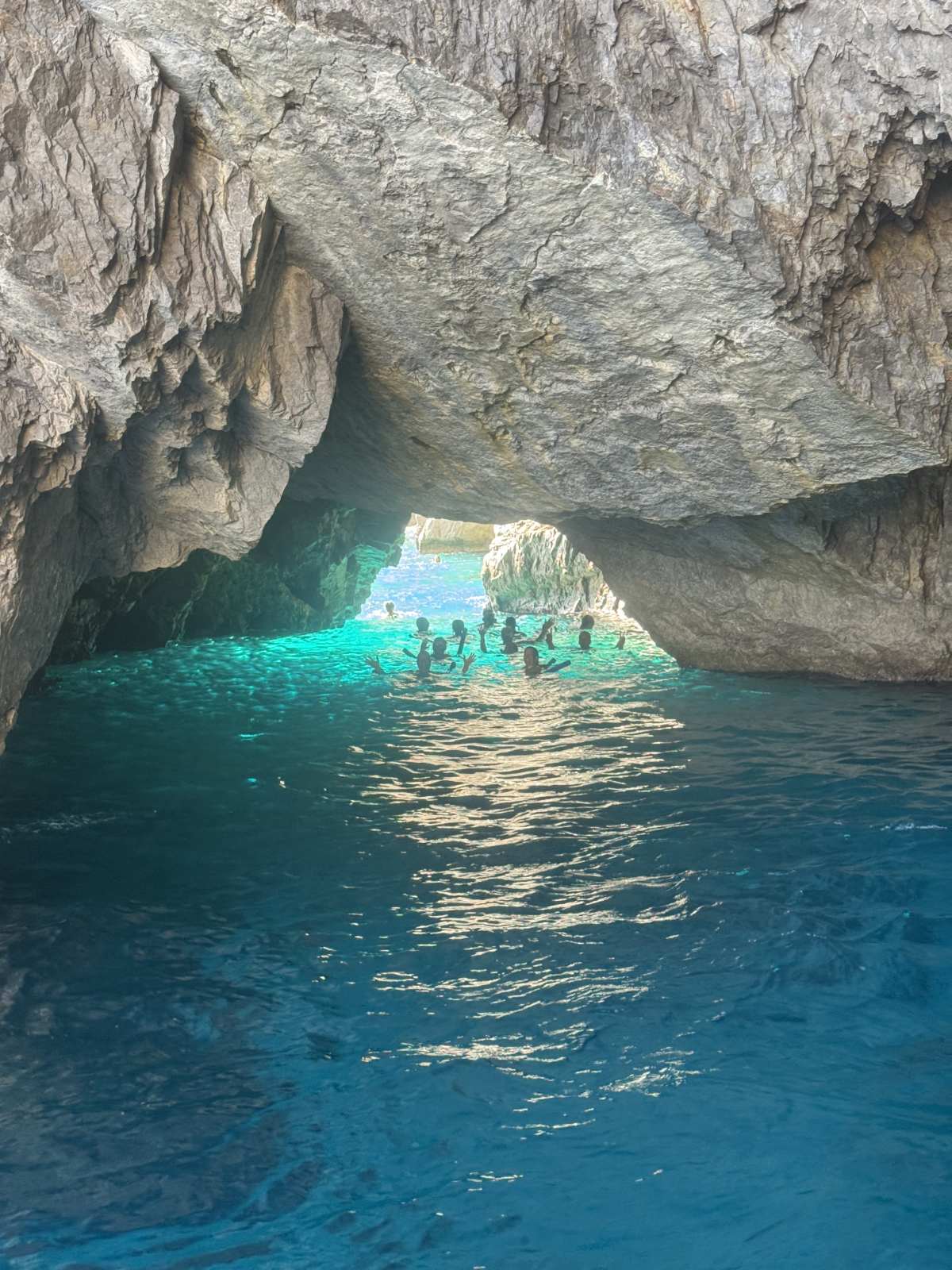
Capri isn’t just famous for its looks. This island has been luring in emperors, artists, and eccentrics for thousands of years. The Romans built palaces here. The 19th-century elite wrote poetry about how miserable they were here. And today it’s a battleground for influencers fighting for the perfect selfie. But beneath all that, Capri still has its secrets, hidden coves, ancient ruins, and trails where you won’t hear a single selfie stick click. So, let’s cut through the crowds, the clichés, and the overpriced meals. This is Capri – how to get here, what to see, and how to experience it like a pro. Let’s go. Getting to Capri is easy. Getting to Capri without losing your patience, that’s a bit trickier. This island may be an exclusive paradise, but there’s no airport, no bridge, and definitely no secret billionaire tunnel – just boats, lots and lots of boats. You’ve got three main jumping-off points: Naples, Sorrento, and, if you’re already deep into your Italian fantasy, the Amalfi Coast. The fastest option, Sorrento. It’s only 20 minutes away by hydrofoil. From Naples, it’s more like 50 minutes, but hey, at least you get to stare at Vesuvius looming in the distance. There are two types of ferries: the slow ferry and the hydrofoil. The slow one is cheaper and lets you enjoy the ride.
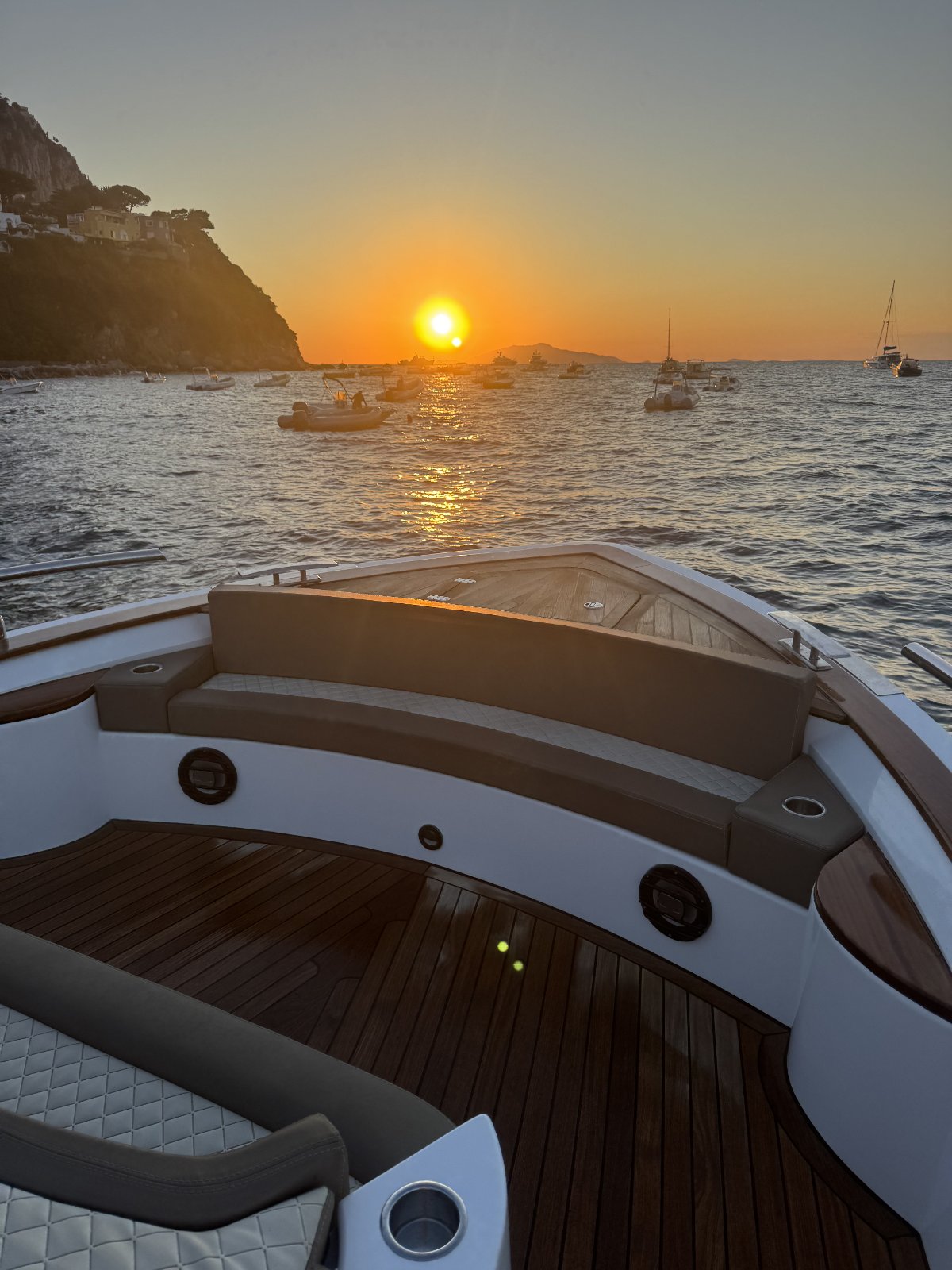
The hydrofoil is twice as fast but feels like you’re trapped in an overpriced waiting room that just happens to be moving. Either way, book in advance if you’re visiting in summer, or prepare to fight for a ticket like it’s the last lifeboat on the Titanic. And then, you arrive. Marina Grande – Capri’s chaotic welcome mat. The first thing you’ll notice, crowds, the second thing. People who already look lost. If you’re staying overnight, your hotel might send a porter to grab your luggage, which is great because dragging a suitcase uphill here isn’t that easy. Now, you’ve got choices. Option one: The funicular. It’s the fastest way up to Capri town, but expect a line. Option two: A taxi. These aren’t just taxis, though. They’re glamorous, open-top, vintage-style convertibles designed to make you feel like a 1960s Italian celebrity… for about 25 Euros a ride. Option three: The bus. Efficient, slightly terrifying, and best enjoyed if you don’t mind sharp turns at high speeds. Of course, you could skip all of this and book a private boat transfer. Yes, it’ll cost you, but if you want to arrive in style, this is the way to do it.
Capri Town is everything you expect it to be: charming, luxurious, and completely, unapologetically expensive. This is where the island flaunts its best version of itself: boutique-lined alleys, sunlit piazzas, and enough historic charm. Most people arrive the same way: funicular from Marina Grande. And the moment you step off, you’re in La Piazzetta – Capri’s famous square, a place that has hosted everyone from Roman emperors to 1950s film stars to, well… you. The first rule of Capri Town? You don’t just visit the Piazzetta, you enjoy it. This is the island’s open-air living room, where the main activity is watching other people do absolutely nothing. Order an espresso and lean back. It’s the only way to blend in. And yes, that coffee will cost you more than a full meal elsewhere, but consider it the price of admission to one of the world’s most exclusive theaters. But don’t just sit here. Capri Town rewards those who wander. Via Camerelle is lined with every designer label you can name. If you have zero intention of dropping a few grand on a silk scarf, it’s not worth walking through. But if you want something that won’t drain your bank account, look for the sandal-makers. Capri has been famous for custom leather sandals since Jackie Kennedy strolled through here in the ’60s. Walk in, pick a style, and they’ll make them for you on the spot. And no, it’s not cheap, but at least it’s not “Gucci not cheap”. Behind the crowds and the luxury boutiques, there’s another side to Capri – one that feels less staged and more timeless. If you need a break from the retail assault, walk ten minutes from the Piazzetta and find yourself in the Gardens of Augustus, aridiculous name, considering these gardens were built in the 20th century, but let’s not argue with marketing.
This place is all about the view. Stand at the edge, and Capri unfolds beneath you. It’s stunning, it’s peaceful, and it’s one of the few places on Capri that won’t charge you an entry fee just for existing. So take your time, breathe in the scent of the lemon trees, let the breeze remind you that yes, this is real life, and maybe even forget, for just a moment, that you still have to pay for lunch. Capri Town isn’t all boutiques and fancy drinks. Just a few steps from the madness, you’ll find the Certosa di San Giacomo, a 14th-century monastery that most tourists don’t even know exists. Today, it’s an art museum, with works that range from classical to ‘I have no idea what I’m looking at.’ But even if you don’t step inside, the peaceful gardens alone are worth the detour.
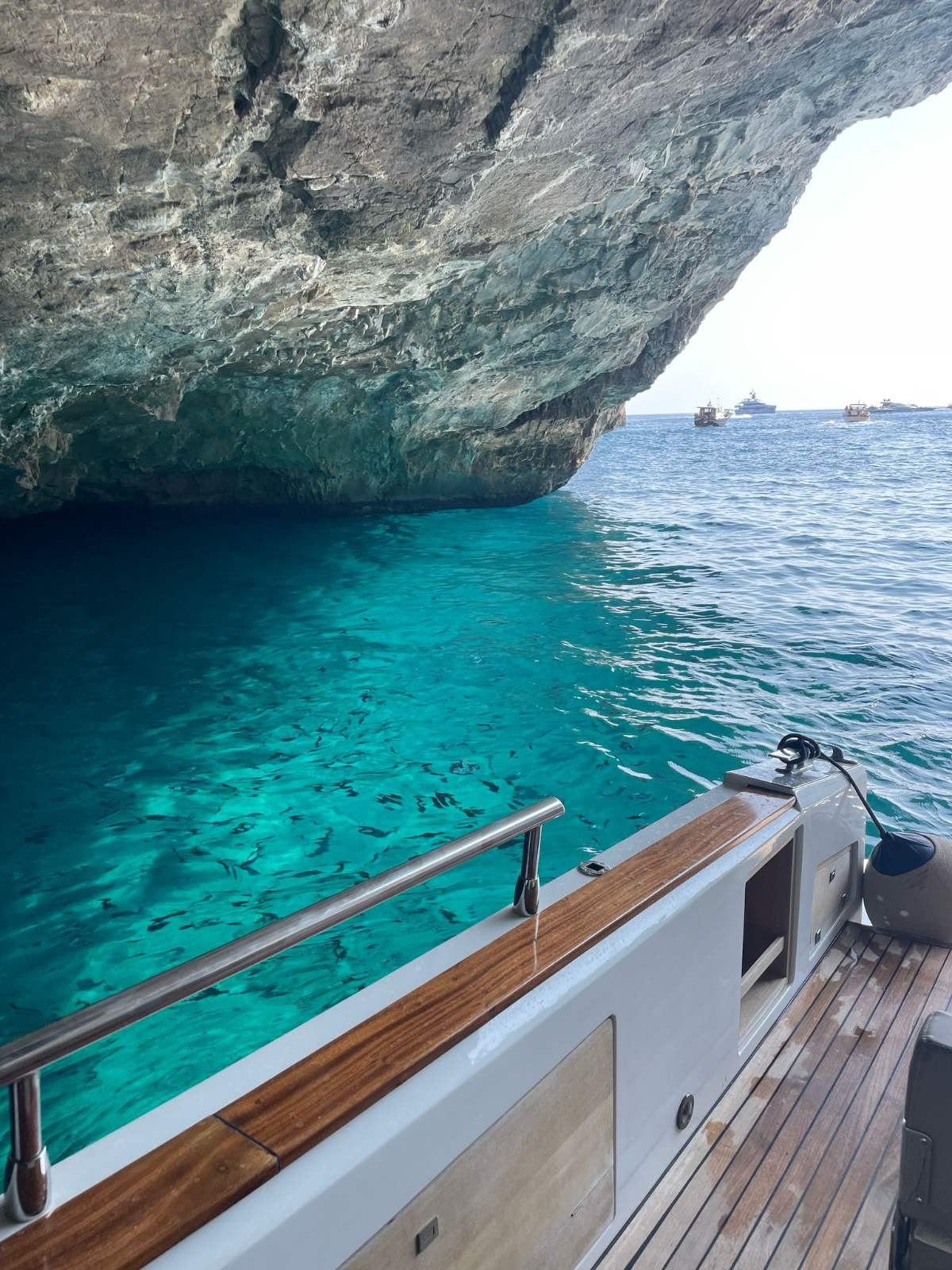
Alright, now it’s time to get some perspective – literally. Welcome to Monte Solaro, the highest point on Capri and the only place where you can truly escape the crowds. Monte Solaro is Capri’s rooftop. At 589 meters, almost 2,000 feet, it’s the tallest point on the island, which means it’s got the best views. On a clear day, you can see the Amalfi Coast, Naples, and even Mount Vesuvius. Now, how do you get up here? You can be an overachiever and hike. It’s steep, it’s hot, and it takes about an hour. But hey, if you want to work off that second plate of pasta, go for it. Your second option is to take the chairlift, which is objectively the correct choice. This is no ski lift – just a single wooden seat, no bar, and a slow, silent glide up the mountain. It’s peaceful and scenic. It’s also slightly terrifying if you don’t like heights, but the reward, absolute, uninterrupted beauty. As you rise above Anacapri, the island unfolds beneath you. White villas clinging to cliffs and lemon groves hiding secret gardens. This is the Capri you dream about. And then, you reach the top. There’s a reason they call this the best view in Capri. To the south, you’ve got the Faraglioni. To the north, the Bay of Naples. Look west, and you might even spot Ischia. There’s also a tiny café up here. Monte Solaro is Capri at its most peaceful, its most breathtaking. But now, it’s time to descend, because there’s still more island to explore.
Let’s get something straight – Anacapri is not Capri. Anacapri is different. It’s higher up, both in altitude and in attitude, roughly 300 meters above sea level. What does that mean for you? It means better views, better air, and significantly fewer people asking for directions to the Blue Grotto. It’s the place you go when you love Capri but hate what it’s become. The town’s name comes from the Greek “ana”, meaning “above,”. To get up here, you take a hair-raising bus ride full of near-misses or, if you’re a masochist, hike the ancient Phoenician Steps. The population is around 7,000 people, small enough to feel intimate, big enough to function. Anacapri doesn’t play by Capri town’s overpriced, tourist-trap rules. Instead, you get trattorias run by families who haven’t changed their recipes in generations. Via Giuseppe Orlandi, the main pedestrian street, feels like a dream sequence from an old Italian film. Ceramics painted with the island’s signature bright blues and yellows line shop windows, daring you to fit one in your suitcase. And tucked between it all are small cafes where the espresso is strong and the pastries are fresh. Graham Greene, the famous British writer, lived in Anacapri for years, drawn to its peace and quiet. The famous Villa San Michele was built by the Swedish doctor Axel Munthe in the early 20th century, and let’s just say he had taste… and money. The villa is an architectural fever dream with ancient artifacts, gardens that overlook the entire freaking Mediterranean, and a general air of “I live better than you.”Feeling like a bit of history? Try the Chiesa di San Michele Arcangelo, an 18th-century church famous for its elaborate hand-painted majolica tile. Yes, a literal masterpiece beneath your feet. Then there’s the Casa Rossa, an eccentric red mansion that houses a strange but oddly charming collection of artwork and archaeological finds.
The Blue Grotto is Capri’s most famous, most photographed, and most overhyped natural wonder. And yet… you still have to see it. Because no matter how many pictures you’ve seen, nothing quite prepares you for that electric blue glow beneath your boat. So, what exactly is it? Well, at first glance, it looks like just another sea cave. But step inside, and the magic happens. Thanks to a narrow underwater opening, sunlight filters in and reflects off the limestone seabed, creating a glow so blue it makes the Caribbean jealous. There are two ways to visit: by boat or by land. The boat tour is easy. Hop on a tour from Marina Grande, enjoy a breezy ride around the island, and prepare to wait. And wait, because if the weather’s good, you’re not the only one with this bright idea. Once it’s your turn, you’ll switch to a tiny wooden rowboat; hand over €18 – cash only. And then, the fun part: squeezing through the cave entrance. It’s barely a meter high, which means you’ll have to lie flat in the boat as your rower yanks you in with a metal chain. Not dramatic at all. And then, you’re in a cathedral of neon blue water and echoing voices. You’ll have about five minutes to enjoy it, take your photos, and pretend you’re not slightly claustrophobic. Now, is it touristy, absolutely. Is it expensive, of course. But is it worth it? Yeah. Because no matter how many influencers, tour groups, or overpriced boat rides get thrown at this place, the Blue Grotto remains one of the most surreal natural sights on Earth. Just don’t expect to have a private moment of zen. You’ll share this wonder with about a hundred other people. Now let’s go down to the edge of Capri. Literally.
This is Punta Carena, home to the island’s legendary lighthouse. It’s the second tallest in Italy, the brightest in the Tyrrhenian Sea, and one of the best spots to escape the tourist circus up in Capri town. We’re on the island’s southwestern tip, where cliffs drop straight into the sea. This lighthouse has been standing here since 1867, flashing its warning light every three seconds to keep sailors from meeting an untimely and very inconvenient end on the rocks. But Punta Carena is also about atmosphere. Unlike the crowded beaches near Marina Piccola, this spot is wild, untamed, and wonderfully low-maintenance. No fine sand, no overpriced sun loungers – just rock slabs warmed by the sun and some of the clearest water you’ll ever swim in. The water here is deep, impossibly blue, and perfect for swimming, if you don’t mind diving right in. There’s no gradual wading here. You jump, you splash, and you feel good. And if you time it right? Sunset at Punta Carena is a masterpiece. The cliffs turn gold, the sea glows, and the lighthouse beams out into infinity. Oh, and did I mention there’s a bar? Because of course there is. Grab a drink, watch the waves, and enjoy the kind of sunset you can only find here in Italy.
By now, you’ve seen Capri’s beauty. But let’s take a detour – back 2,000 years – to when this island was the private retreat of Rome’s most paranoid emperor: Tiberius. Built in the first century AD, Villa Jovis was Emperor Tiberius’ personal fortress-palace, where he ruled Rome from a distance, because… well… he really didn’t like Rome. Can’t blame him. He was dealing with scheming senators, betrayal, and the general stress of running a global empire. So, he didwhat any self-respecting autocrat would do: he packed up, moved to Capri, and never looked back. Getting here isn’t exactly a breeze. There’s no chairlift, no cute little funicular, just your own two legs and a 45-minute uphill trek from Capri town. But the payoff? A peek into the mind of one of history’s most fascinating, and probably most disturbed rulers. Villa Jovis wasn’t just a retreat; it was a fortress. Tiberius had everything: sprawling halls, bathhouses, secret tunnels, and a rainwater collection system that kept the place self-sufficient. He even had a network of guards ensuring no one got in or out without his permission. And then, there’s the Salto di Tiberio. Legend has it that when the emperor got tired of someone, be it an untrustworthy servant or a scheming politician, he had them tossed off this very cliff. Whether that’s true or just Roman gossip? We’ll never know. But stand here, look down, and tell me it doesn’t feel true. Today, Villa Jovis is a hauntingly beautiful ruin quiet, windswept and completely free of souvenir shops. Place where history lingers, where you can almost hear the whispers of an emperor who ruled the world from exile, and the screams of people falling down the cliff. And where you might just ask yourself: if you had absolute power, wouldn’t you want a place like this too?
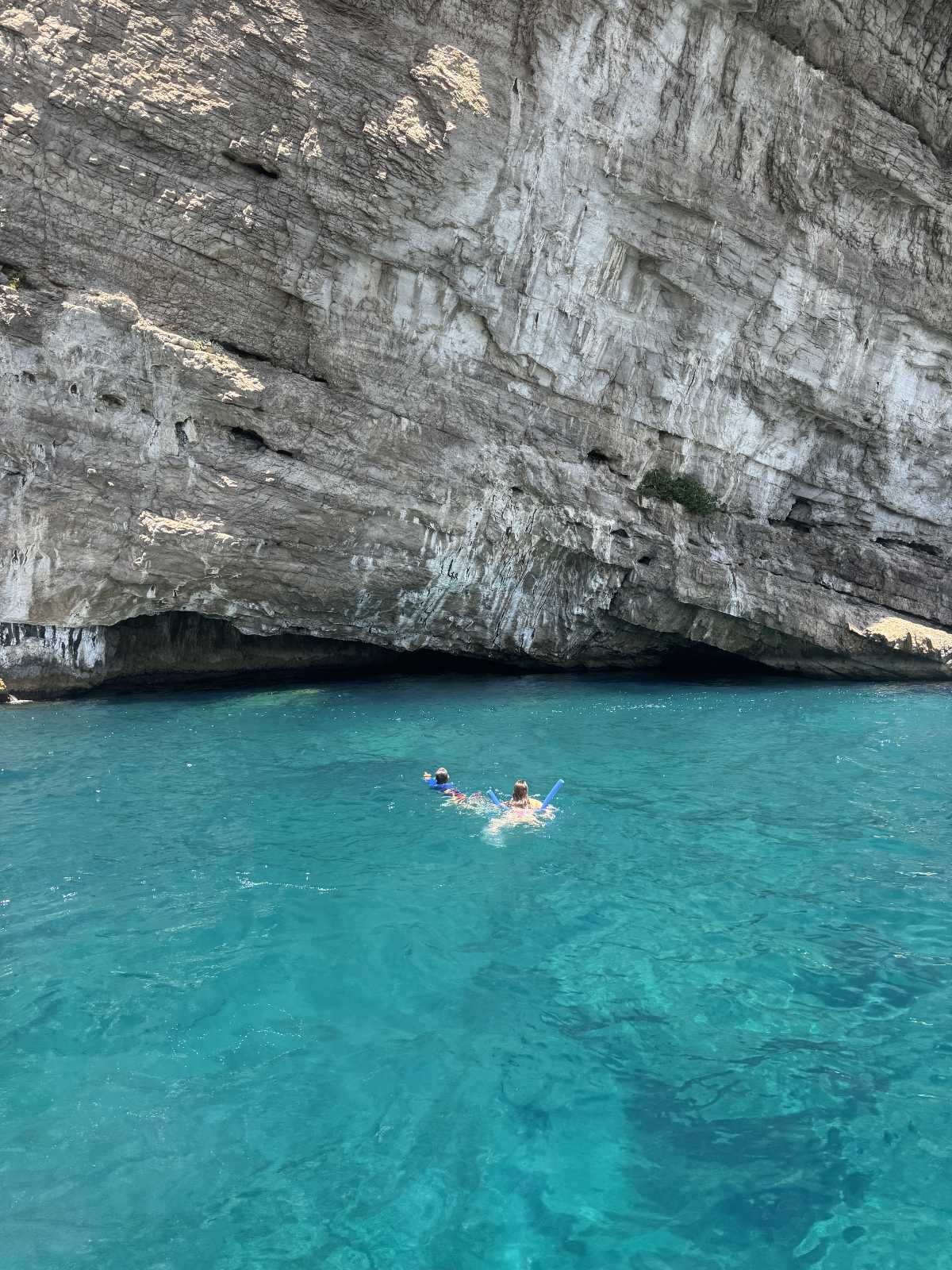
If Marina Grande is Capri’s chaotic front door, Marina Piccola is the island’s VIP lounge. It’s smaller, more secluded, and – despite the name – far superior. This is where you go when you want to swim, sunbathe, and pretend for a moment that you actually belong here. It sits on the island’s sunny south side, tucked right under the towering cliffs of Mount Solaro. This spot has been famous for centuries. Legend has it, this is where Ulysses heard the song of the sirens. In reality, the only thing luring in sailors today is the promise of a €50 sun bed rental. Now, let’s talk logistics. You can reach Marina Piccola in two ways: by bus – quick, cheap, slightly terrifying – or by walking down the equally terrifying ancient Via Krupp, a zigzagging pathway carved into the cliffs. That is, if it’s open. It’s often closed due to rockslides, which is Capri’s way of keeping things interesting. If you want to splash around for free, head to the Spiaggia Libera, the public beach. But be warned, it’s tiny, and space is claimed early by sun-seeking pros who know exactly how to angle their towels. But maybe you prefer a little luxury? There are private beach clubs, like La Canzone del Mare, where you can rent a sun bed. The best part here is the view. Those towering limestone stacks in the distance? That’s the Faraglioni, Capri’s most iconic rock formations. And thanks to Marina Piccola’s location, it stays warm and sheltered even in the off-season. It’s one of the best spots for a swim when the rest of the island is shivering in the wind.
Alright, you’ve decided to visit Capri. Good choice. But timing is everything. Show up at the wrong time, and you’ll either be melting under the Mediterranean sun, or wondering why everything is closed. During summer, Capri is at its most glamorous – and most crowded. Everything is packed, expensive, and hot. The sea is perfect, but if you don’t book months in advance, you’re sleeping on the beach. How about the spring? Now we’re talking. Warm but not scorching, busy but not unbearable. Hotels are cheaper, locals aren’t exhausted yet, and the Blue Grotto is usually open. Basically, you get the Capri experience without the summer madness. Have you ever been to Capri? Let us know in the comments. If you loved this video, please hit the like button and subscribe to World Travel Guide.
ACCOMMODATION

